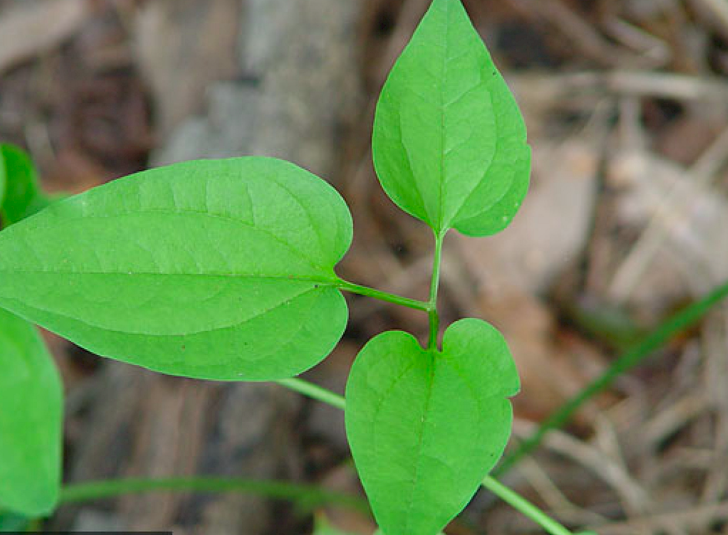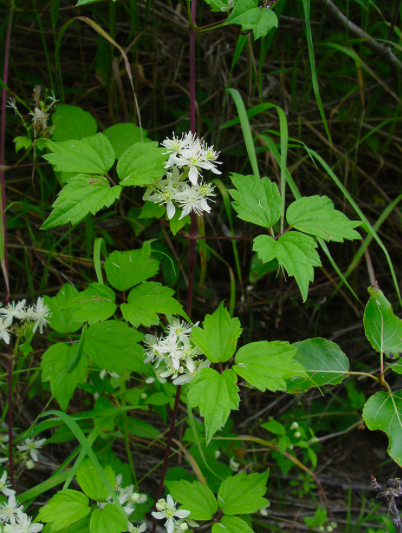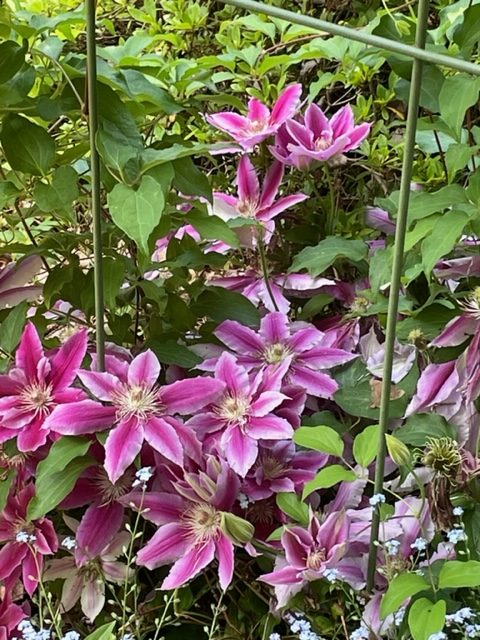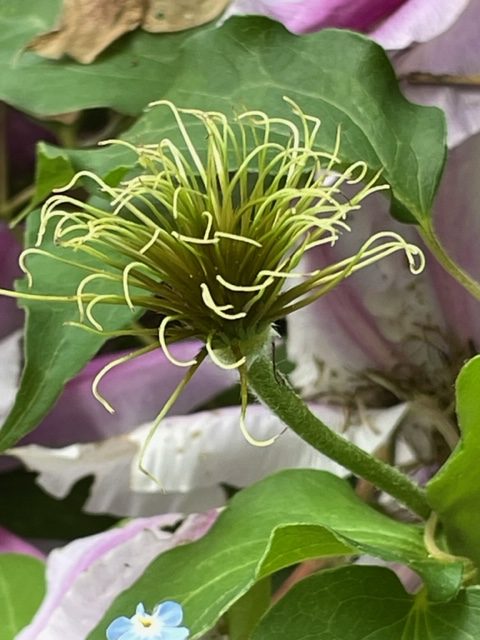A long time ago, back when I was not a gardener but just a youngster waiting to discover the magical world of gardening, I heard a friend of my mother’s telling her how to grow clematis. She said, “put its feet in the shade and its head in the sun.”

I found the mental image highly amusing and remembered this woman’s advice for decades before I actually grew my own clematis. A couple of years ago I planted the common but oh-so-beautiful Clematis jackmannia, carefully placing it where I could put a two inch layer of mulch around the roots to provide the “shade” and where its “head” would receive full sun. It’s taken a couple of years but this combination of sun and shade has proven to provide just the right growing conditions for this gorgeous vine and this year I had a multitude soft pink blossoms.

Worldwide, there are over 300 different species of Clematis, 11 of which are native to the United States. The ubiquitous and invasive Clematis ternifolia, sweet autumn clematis with its profusion of small white flowers is not a native. It is such an aggressive grower that it has been included in the Invasive Plant Atlas for the United States.


A similar, but native and non-aggressive plant is Clematis virginiana, Virgin’s bower. This also produces a multitude of small white blossoms in late summer but is a welcomed addition to the garden.
C. vitalba, native to Great Britain, grew in the hedgerows during the time of Roman occupation and was called traveler’s joy because its sweet fragrance delighted travelers walking down the roads.
In addition to their specific light needs, most garden clematis also needs support. An arbor or fence will do the trick, giving the plant a place to twine and grow.

The seed heads, which develop soon after flowering are unusual balls of thread-like parts that I find almost as attractive as the blooms. If you decide to collect seeds to plant, be patient! It sometimes takes up to three years for these seeds to germinate and another couple of years to grow into a plant big enough to bloom.

According to the language of flowers, clematis is a symbol of mental beauty and, in case you were wondering, the correct pronunciation is KLEM-uh-tus!
